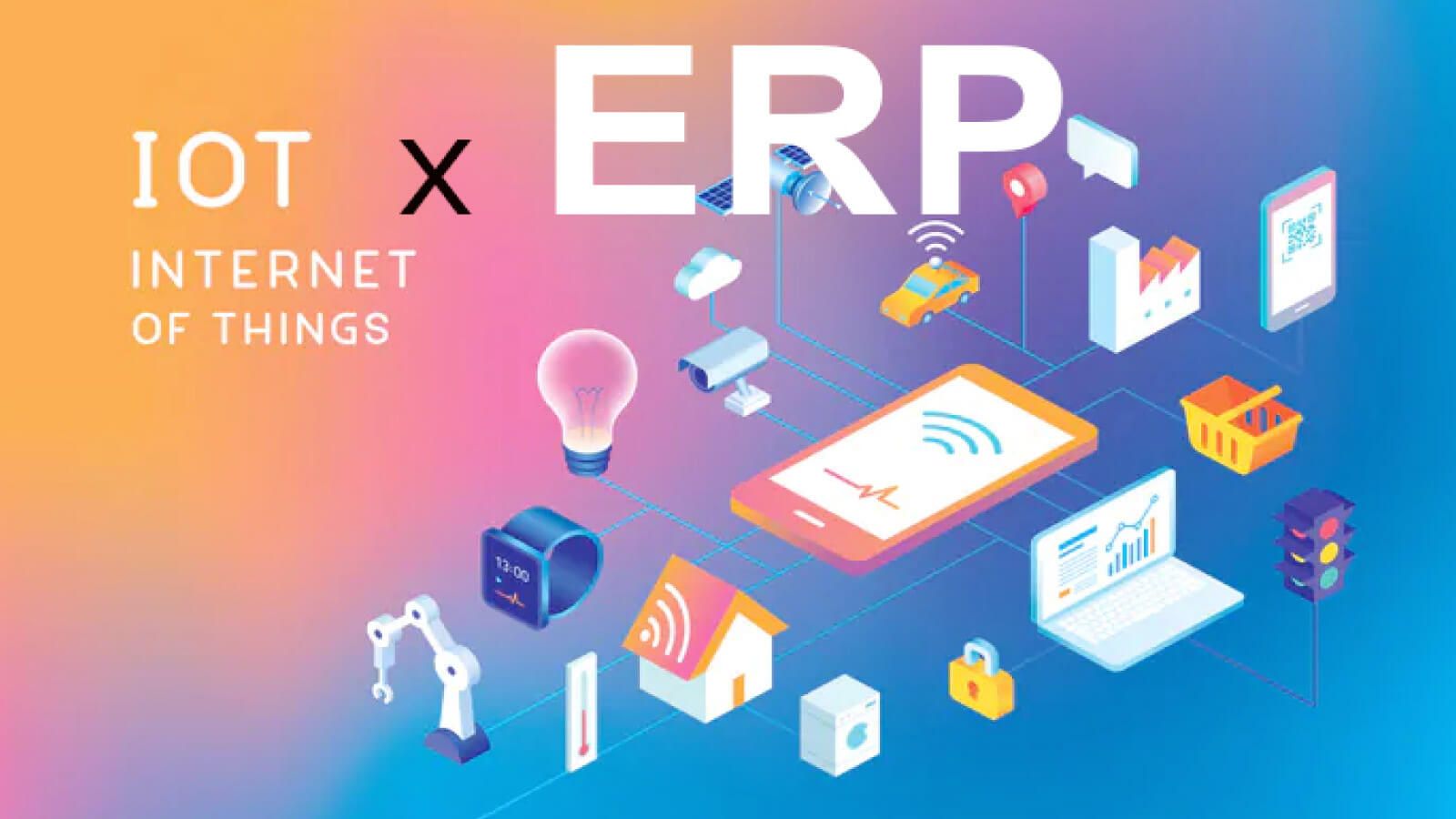How can IoT improve your ERP system? [en]
- January 11, 2022
- Posted by: Siriluck Sukitphittayanon
- Category: Articles-EN


Enterprise resource planning (ERP) systems help companies manage many operational needs including maintaining inventory levels, fulfilling orders and managing accounting needs.
However, as a new alternative for people to connect ERP systems to Internet of Things (IoT) devices, this emerging method can help users improve the efficiency of ERP software and achieve better company results. Here are some potential IoT benefits from integrating with ERP tools.
1. Enable Better Billing for Products
Many ERP systems take care of necessities such as issuing accurate invoices when customers make purchases. However, adding IoT into the mix can eliminate the inherent delays that occur when a company’s customers re-order consumables.
Ohio’s Jergens Industrial Supply did this by installing smart vending machines that store merchandise on customers’ store floors. These additions allow employees to get pre-approval for products like eyeglasses or wrenches.
They scan barcodes relevant to the current project and automatically receive all the required tools and equipment from the machine. The producer will receive an invoice at the agreed price. The supplier achieved a 30% increase in productivity after installing dispensing equipment.
Replenishing the machine is straightforward as well. Drivers are given directions based on where they need to fill up. They also use iPads that confirm where additional supplies need to be taken. This arrangement saves time compared to previous manual restocking methods. Customer service has improved too. A pre-agreed price eliminates the need for quotations and purchase orders.
2. Reducing manual replenishment steps
A conventionally deployed ERP system can help company representatives view stock statistics and use that information to decide when to reorder. The process provides better visibility, which can help prevent outages and downtime. However, the associated IoT benefits are also available to enterprises.
One option is to use smart sensors that measure available consumables based on specific characteristics, such as weight. Users can set criteria for automatically reordering those items when the total drops below a specified parameter.
This eliminates the possibility of someone forgetting to order materials when the ERP interface prompts them to do so. Incorporating connected sensors into the process also avoids situations where a person may inadvertently order more or less than necessary. Therefore, the use of sensors connected to ERP can save companies money while avoiding situations of insufficient necessities.
3. Allow for more data-driven decisions
While ERP systems have always facilitated the use of data to guide business decisions, IoT offerings have greatly accelerated that process. and reduce the chance of errors. Employees used to manually enter data into the ERP system. The process proved to be time consuming. And there’s always a chance that keystrokes are incorrectly executed. Entered data in the wrong column. or make other types of mistakes
By integrating ERP products with IoT devices, data collection takes place automatically and in real time, enabling people to make informed decisions based on the latest information. These advantages make company leaders more responsive. They can also turn proactive instead of reactive.
Consider some of the widely used protective measures, such as electric motor testing. Factors such as temperature variations and excessive vibration can weaken motor insulation and hardware and increase the risk of failure. The compact housing of the motor also ensures adequate heat dissipation. Testing electric motors is an effective way to understand your machine’s condition before it fails. It can detect minor and developing problems that some tools may not see.
As IoT sensors continuously collect data, they can immediately alert plant managers to maintenance or repair needs. Obtaining such information may encourage those experts to schedule motor tests and other predictive measures earlier than they would have done. Information helps them act quickly and avoid problems.
4. Reduction of defective products while maintaining quality
An increase in faulty goods is likely to lead to an influx of returned goods as well. Generally, ERP systems provide tools to speed up return processing and track goods as they move through the system. Such features are necessary, but the addition of IoT devices may be at the heart of the bug. Manufacturers and supply chain managers can identify and target those issues before the product reaches the customer. IoT sensors extend company insights into the production process by analyzing multiple data streams.
The goal is to use data to maintain high quality and greatly reduce problems that result in defects. ERP systems can provide valuable information about trends in returned products. This could indicate a machine failure or the need for better monitoring.
Consider an example where a company invests in IoT devices to address a relatively new, well-known problem of lost customers complaining about malfunctioning products and taking their business elsewhere. returned during the specified period due to defects
These logs can be a reliable starting point for how and where to use IoT sensors to see what’s wrong with machines that might contribute to product defects. If people are able to connect most or all of the latest quality issues to one or a few devices or production lines. problem confirmation Fixed a bug that caused the bug. and make it easier for the company to resume operations.
The ERP system then not only confirms that a product has been returned but also helps company leaders see what’s going on and implement their IoT setups more efficiently.
Take the ERP System to the Top
The IoT benefits listed here highlight why companies should strongly consider using connected industrial devices to make their ERP tools better than ever. users to support their operations and goals. However, when used together instead of separately These resources can help company leaders act on reliable information.

